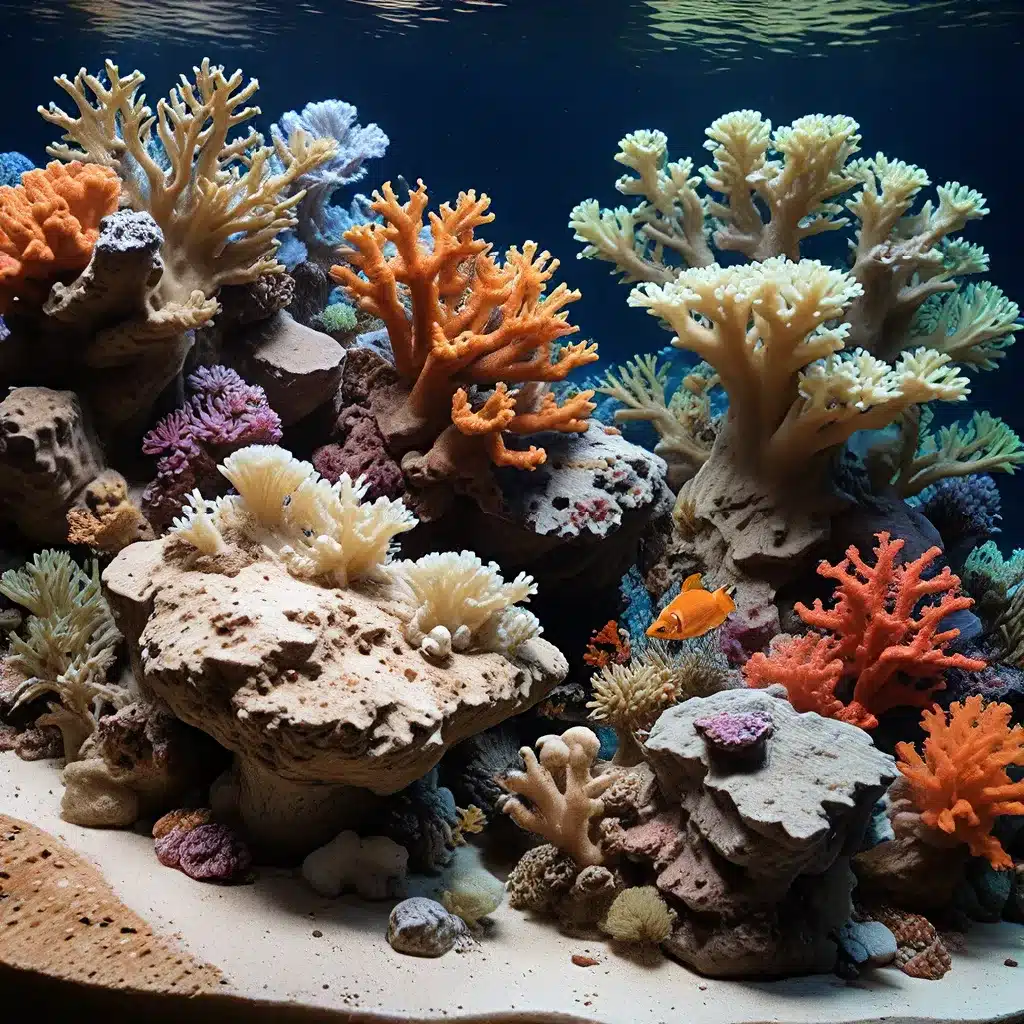
In the captivating world of aquarium keeping, the quest for creating a thriving, visually stunning underwater environment is a constant pursuit. One of the most captivating and intricate aspects of this hobby is the incorporation of live rock and coral fragments into aquascapes. These natural elements not only enhance the aesthetic appeal of the tank but also play a crucial role in maintaining a balanced, self-sustaining ecosystem.
The Significance of Live Rock in Aquascaping
Live rock is a fundamental component of many aquarium setups, particularly in reef tanks and marine aquariums. This porous, rocky substrate is harvested from the ocean and provides a natural habitat for a diverse array of marine life. Beyond its aesthetic value, live rock serves as a biological filter, harboring beneficial bacteria that break down waste and regulate water chemistry.
When carefully incorporated into an aquascape, live rock can create a sense of depth, texture, and visual interest. Aquarists can strategically arrange the rock to mimic natural underwater formations, providing hiding places and swimming lanes for fish and invertebrates. The crevices and surfaces of live rock also offer attachment points for coral fragments and other sessile organisms, allowing them to thrive and contribute to the overall ecosystem.
Integrating Coral Fragments into the Aquascape
Coral fragments, often sourced from sustainable aquaculture or donated fragments, are a captivating addition to any aquarium. These miniature versions of their larger, reef-building counterparts can be strategically placed on the live rock, creating a vibrant and diverse underwater landscape.
One of the key advantages of incorporating coral fragments is their ability to grow and expand within the aquarium. As the fragments mature, they can transform the overall aesthetic, adding splashes of color, intricate textures, and a sense of depth to the aquascape. This dynamic growth also contributes to the overall biological filtration of the system, as the corals absorb nutrients and release oxygen.
When selecting coral fragments, it’s essential to consider their specific lighting, flow, and water parameter requirements. By choosing compatible species and arranging them in a way that optimizes their growth and health, aquarists can create a visually stunning and ecologically balanced underwater ecosystem.
Maintaining Water Quality and Nutrient Balance
Integrating live rock and coral fragments into an aquarium requires a diligent approach to water management and nutrient control. The decomposition of organic matter, coupled with the metabolic processes of the aquarium inhabitants, can lead to the buildup of harmful substances like ammonia, nitrites, and phosphates.
To ensure the long-term success of the aquarium, it’s crucial to establish and maintain proper water circulation and filtration systems. This may involve a combination of mechanical, chemical, and biological filtration methods, tailored to the specific needs of the aquarium inhabitants and the live rock and coral fragments.
Regularly monitoring and adjusting water parameters, such as pH, temperature, and salinity, is also essential for promoting the health and growth of the aquarium’s ecosystem. The use of natural tannins and other organic supplements can also contribute to the overall water quality and the well-being of the aquarium inhabitants.
Sustainable Aquascaping Practices
As stewards of the aquarium hobby, it’s important for aquarists to embrace sustainable practices when incorporating live rock and coral fragments into their aquascapes. This includes sourcing materials from reputable, eco-friendly suppliers and avoiding the collection of wild-caught specimens, which can have a detrimental impact on natural reef ecosystems.
Pope Francis’ encyclical “Laudato Si'” emphasizes the importance of caring for our common home, the Earth, and this principle can be applied to the aquarium hobby as well. By prioritizing sustainable aquascaping and responsible aquarium management, aquarists can contribute to the preservation of marine environments and the promotion of a healthy, balanced ecosystem.
Conclusion: Cultivating a Thriving Underwater Oasis
Integrating live rock and coral fragments into an aquarium requires a delicate balance of artistic vision, technical expertise, and ecological awareness. By understanding the key principles of aquascaping and water management, aquarists can create truly captivating and harmonious underwater ecosystems that not only showcase the beauty of marine life but also contribute to the overall health and sustainability of our planet.
Whether you’re a seasoned aquarium enthusiast or just starting your journey, King Aquarium invites you to explore the captivating world of aquascaping and discover the joy of cultivating a thriving underwater oasis in your own home.

